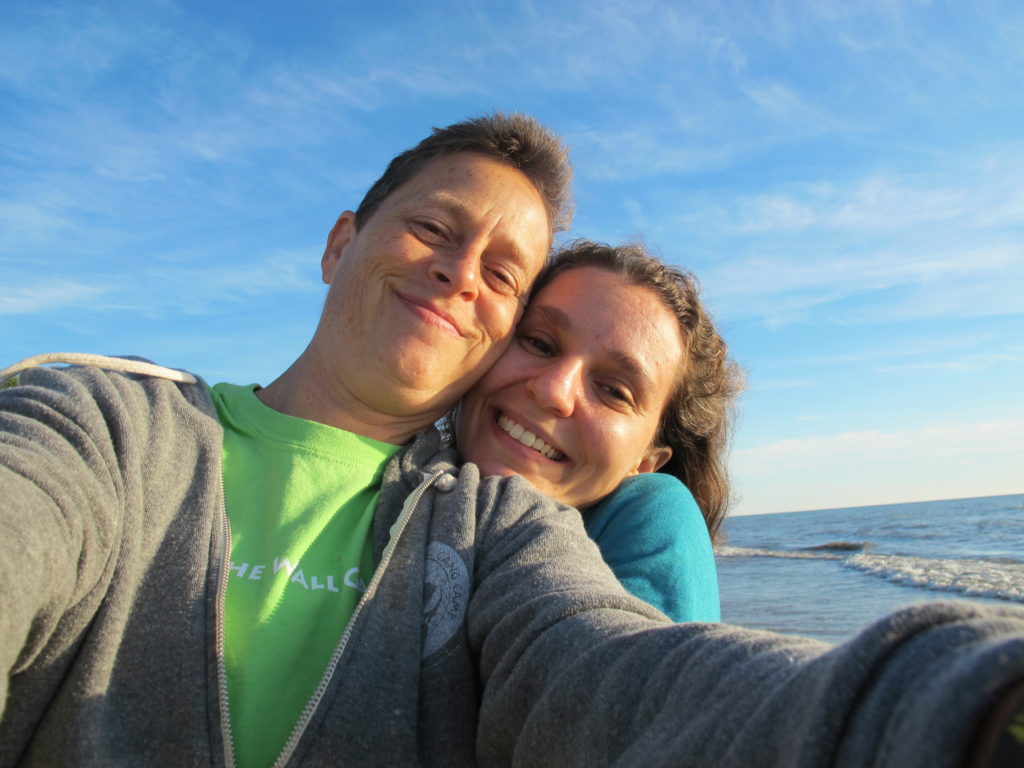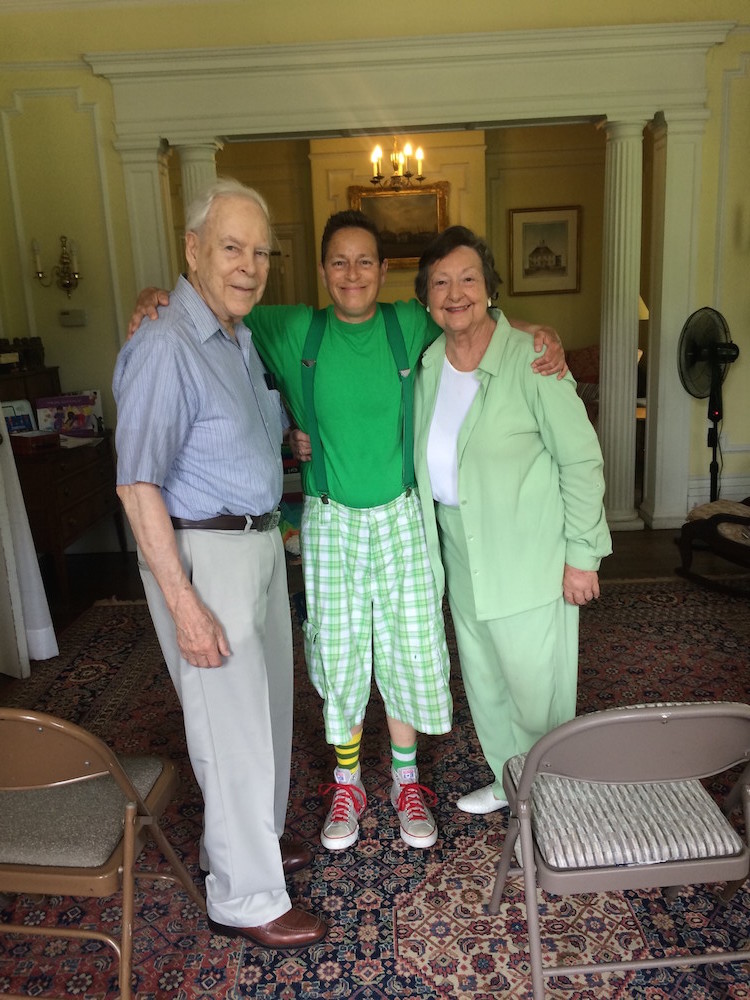
By Mal Malme
Each year during my annual checkup with my wonderful oncologist Panos A. Konstantinopoulos, MD, PhD, at the Susan F. Smith Center for Women’s Cancers at Dana-Farber, I reflect back on how grateful I am that my ovarian cancer is in remission. And while I appreciate the warmth and clinical expertise that he and my entire care team has provided, I also remember the complex issues I faced when diagnosed – some of which continue to this day.
When I was 43, I had a hysterectomy to remove some fibroids. This operation can often cause menopause, and I was truly looking forward to the possibility of life without a menstrual cycle. As a non-binary person who identifies as neither a woman or man, those days each month were always a time I felt really disconnected from my body. It just did not feel like me.
My GYN surgeon noticed an abnormal-looking cyst on one of my ovaries, and decided to remove the entire ovary. When the cyst came back positive for ovarian cancer, I had to shift into survival mode. I had my second ovary removed a month later, in June 2009, along with a lymph node dissection. One node out of 15 was cancerous, so that August I started six cycles of combined IV and IP [intravenous and intraperitoneal] chemotherapy at Beth Israel Deaconess Medical Center.
My treatment was led by Dr. Konstantinopoulos, otherwise known as “Dr. K,” along with my surgical oncologist, Dr. Chris Awtrey. (When Dr. K left Beth Israel for the Susan F. Smith Center, after my initial surgery and chemotherapy, I followed him.) My energy was devoted to getting through each day. The chemo was very intense, both physically and emotionally, and it took all I had. There is a part of me, I’m sure, that thought I got ovarian cancer because of how I identify and live my life – almost like some kind of twisted punishment. I know this is far from the truth, but these uncontrollable thoughts come from a history of trying to fit in to the social norm of the binary.
It also jolted me into feeling I had a female body, one that was supposed to be and look a certain way. I was reminded of that constantly by the pink, teal, and purple I saw everywhere – attempts to make cancer “pretty” that work under the assumption that all who identify as women with cancer are feminine. We are not.
After my hair fell out, I was given a prescription for a wig. I understood that a lot of women want a wig because they are concerned about their appearance; my mom got a wig when she went through breast cancer one year after I finished treatment, and she was comforted by how the wig made her feel. But I had no desire to wear one, because it wasn’t me. I exist in a world that is not binary, and am not concerned about my appearance in that same sense.

I don’t want to discount how these can be helpful to people who want them, but having additional choices is really beneficial to those of us who don’t want be given a big pink tote bag with a pink scarf and pink socks. One way I tried to help with this was that every year after my cancer experience, my spouse Meg and I would host a “hat party” with guests bringing new hats of all kinds — something for everyone.
It is mostly the cancer industry that feminizes everything. My care team was and has always been respectful. They treated me and Meg with a great deal of care, and I never felt like I was this “weird” patient. For the most part, they got to know me for me, even though I had a very female cancer. Back then, I was still using female pronouns like she/her/hers, along with other pronouns, and it was fine with me when people used them. It’s been several years now, and how I feel and how I identify has evolved as more people like myself are claiming their truth, and language becomes more inclusive.
Learn More:
My treatment ended on December 7, 2009, and so far, so good. I come in each year to meet with Dr. K and have had no recurrences. Some things are still challenging, however. I’ve been going through surgical menopause ever since my second surgery in 2009, and have had to go to different specialists because of the hormonal shifts and some resulting depression and anxiety.
I belong to a closed Facebook group called QueerCancer that is a wonderful resource and community for queer, trans, and non-binary individuals dealing with cancer. We can share openly our fears, struggles, and triumphs with others who understand and celebrate how we identify outside the heteronormative binary world.
I’ve also been a professional medical clown since 1997, working primarily at Boston Children’s Hospital and Hasbro Children’s Hospital. Since my cancer experience, I feel I connect with patients and families that I perform for on a deeper level. And though I don’t ever want to go through cancer again, I am grateful the experience has allowed me to develop more empathy as I connect with others – no matter who they are.
Learn about The Pineapple Project theater piece that Malme has created to teach children ages 3 to 8 to celebrate who they are, and support each other’s differences.
